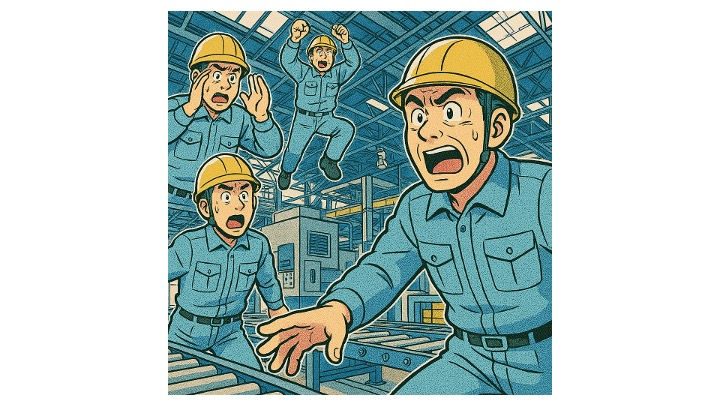Complaint and Kaizen
- hidet77
- Mar 20, 2023
- 4 min read

As Kaizen became an international business word, things got formal. I have seen some forms that people need to be filled out. There are some KPIs. I have seen one with space to write down the estimated cost reduction.
Does Kaizen require such bureaucracy?
Instead of such formality, making Kaizen more approachable is necessary. And I thought about “Complaint.” A complaint is everywhere. I work in a place for eight hours a day, five days a week. Of course, I have a complaint or more. What do we do with that complaint? Just leave it? No, we need to think about how to connect that to Kaizen.
I had a former Toyota operator working at the factory long ago. On day one of her work, she asked for standardized work. By day two, she was suggesting “Kaizen.” And on day four, several other operators came to me and asked, “Are we allowed to do that?”
I didn’t fully understand what they meant, so they explained. “It looks like she is just complaining. That’s why we were wondering.” I told them that I didn’t think of her comments as complaints but as some ideas for improvement. And I asked if they could do the same. They agreed. The ideas flooded. They said this is “easy.” They thought suggestions had to be more formal. And my slow Kaizen became the bottleneck. But in a month or so, the team’s productivity has doubled.
Complaint. An adverse opinion about the process. It always exists like magma inside the earth. You might not see them even if you did some surveys because such formality will never catch anything. It has an enormous amount of energy. If ignored, it could become a destructive eruption. If properly used, it could create new “land and energy.”
How can we convert the complaint to Kaizen?
1. Try standardized work first, please.
I heard many complaints without trying the standardized work. This is not acceptable. This is whining. Before providing any complaints, please first try standardized work. If it is difficult, please mention that. Let's mutually agree that standardized work is the first step.
2. Complaint as a sign of trust
Consider complaint as a sign of trust. Nobody will complain to you if you are not trusted. If an operator has a complaint but has no one to complain to, he will quit the work. You wouldn’t complain to someone who will yell at you and say, “shut up and get back to work.” That somebody is complaining to you is a sign that they trust you. And now, it depends on you to build or destroy that trust.
3. Genba
Have a conversation about the complaint on the shop floor (Genba).
There was a place where every complaint was handled in a room. Air-conditioned. Sitting on a nice chair. Coffee is served, plus sweets. Of course, I want to “complain.”
But Genba has the advantage of understanding the complaint in many ways. First, they can complain and work. They can directly show what they are complaining about. Point fingers at the problem. And then, if that didn’t help me understand, I can try it. This simple process can reduce the stress of complaining. And also, it is effortless that increases idea generation.
In some severe cases, the complaint should be made in a room. We should not forget about that. But for the process complaints, do it on the shop floor.
4. Specific complaint
One of the interesting capabilities I felt with the former Toyota employee was her capability to complain “specifically.”
“This process is difficult.”
“This rack is too high.”
Both are complaints that I got in that line on the same process. Complain A was challenging to tackle. I had to spend time understanding what that meant. Ultimately, I didn’t understand, so I tried so many things. In some cases, it got worse. Both the complainer and I spent so much time developing some frustrations.
On the other hand, complaint B was easy to handle. I just needed to reduce the height of the rack. It was done in less than an hour. When that was done, I got a thump up 👍 from her and started on the next one.
I doubt that her capability to complain specifically was natural. Instead, it was developed through daily communication with her boss. I firmly believe that when you can complain specifically, you are very close to doing Kaizen.
5. Work on it
Regardless of the complaint, work on it. Ignoring is the worst. You are just asking for more trouble later. The attitude of working on it reduces that frustration.
Even here, the specific complaint has some advantages. It is easy to work on when something is clear. Also, even if the specific was wrong, the complainer will understand. For example, when somebody complained that “this process is difficult,” and I worked on the height of the rack and it didn’t work out, from the complainer, I am seen to make a mistake. They lose the motivation to complain again.
On the other hand, when the complaint was “this rack was too high,” and I worked on the height of the rack, and that didn’t work out, the complainer would be, “Oops, that’s my bad.” At that moment, she is open to hearing my ideas. And nobody needs to be perfect. We, as a team, try to find a solution, not a push, in a pull.
Complaint. This does exist. We don’t live in a utopia. Then the question is how to convert the negative energy into something positive like Kaizen. When this happens, the idea will explode with positive energies.



Comments